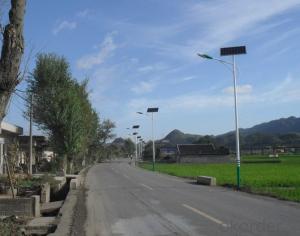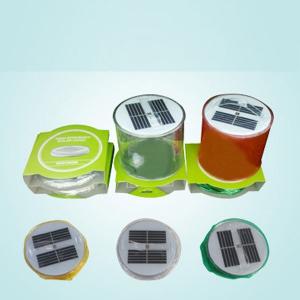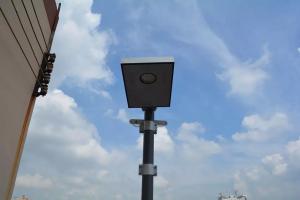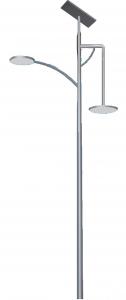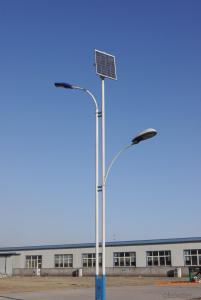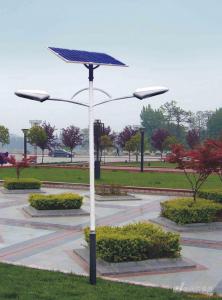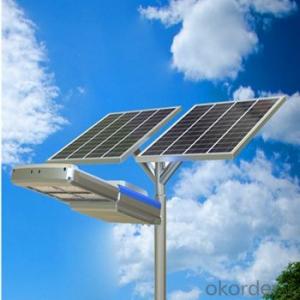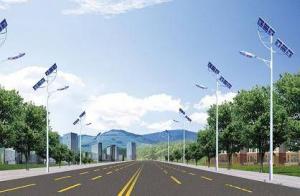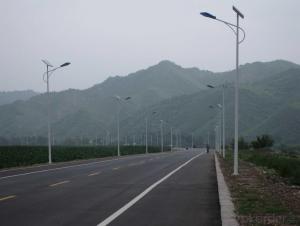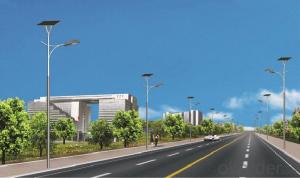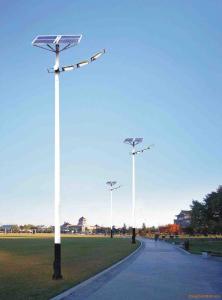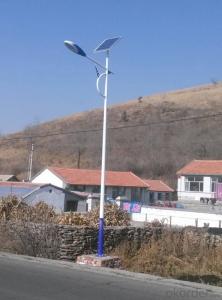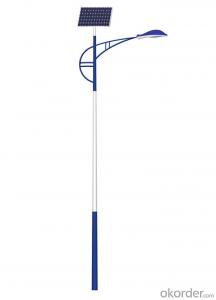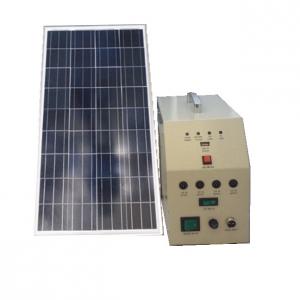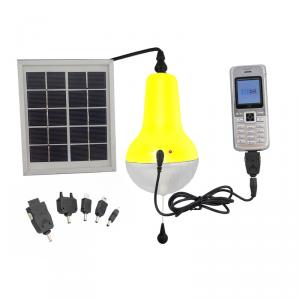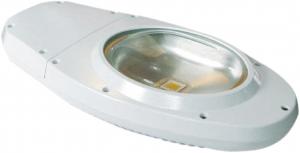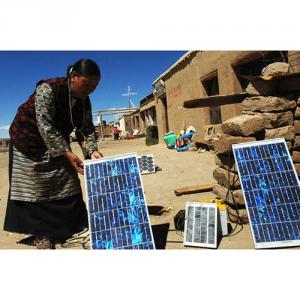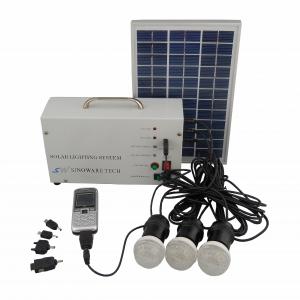Solar Light Outdoor Umbrella - AN-ISSL-40W Solar Street Light for Outdoor High Quantity
- Loading Port:
- China main port
- Payment Terms:
- TT OR LC
- Min Order Qty:
- 1000 watt
- Supply Capability:
- 100000 watt/month
OKorder Service Pledge
OKorder Financial Service
You Might Also Like
Characteristics and Feature
1.Using hight-grade Bridgelux leds, the luminous efficiency is over 120lm/W.
2. Using high efficient monocrystalline solar panels, solar energy conversion rate is 18%.
3. Body sensor can automatically adjust the brightness depending on the crowd change.
4. Using high-quality lithium iron phosphatebattery, the number of charge-discharge cycles is up to 1500-2000.
5. Integrated design can heip to save on shipping, easy installation.
Image
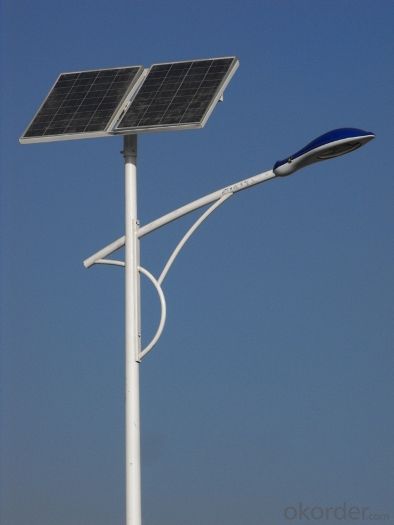
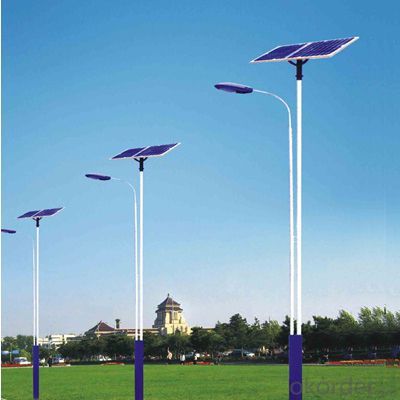
Specification
Model: | AN-ISSL-20W | |
Solar panel | Max power | 18V45W (High Efficiency Monocrystalline Silicon) |
Life time | 25 years | |
Battery | Type | Mottcell Lithium battery(12.8V/20AH) |
Life time | 6 years | |
LED Lamp(with sensor) | Max power | 20W |
led chip brand | Epistar with high brightness | |
lumen (LM) | 2400-2700lm | |
Life time | 50000hours | |
Viewing Angle | 120° | |
Charge time | by sun | 6hours(Strong sunshine) |
Discharge time | full power | ≥10hours |
half power | ≥20hours | |
working Temperature | range( ℃ ) | -30℃~+70℃ |
color temperature | range(k) | 3500-6500k |
mounting height | range (m) | 5-6m |
space between light | range (m) | 18-20m |
Lamps material | aluminium alloy | |
Product size | 920*330*140mm | |
Product weight | 12.5kg | |
Certificate | CE / ROHS | |
warranty period | 5 years | |
Models
Model | Solar Panel | LED Lamp | LED Chip | lumen (LM) | Product size | Charge time |
AN-ISSL-8W | 18V15W | 8W | Epistar | 960-1080lm | 540*320*55mm | 6 hours |
AN-ISSL-12W | 18V18W | 12W | Epistar | 1440-1620lm | 540*320*55mm | 6 hours |
AN-ISSL-15W | 18V/30W | 15W | Epistar | 1800-2025lm | 710*350*55mm | 6 hours |
AN-ISSL-20W | 18V45W | 20W | Bridgelux | 2400-2700lm | 920*330*140mm | 6 hours |
AN-ISSL-25W | 18V50W | 25W | Bridgelux | 3000-3375lm | 1170*330*140mm | 6 hours |
AN-ISSL-30W | 18V60W | 30W | Bridgelux | 3600-4050lm | 1170*330*140mm | 6 hours |
AN-ISSL-40W | 18V60W | 40W | Bridgelux | 4800-5400lm | 1170*330*140mm | 6 hours |
AN-ISSL-45W | 18V65W | 45W | Bridgelux | 5652-6075lm | 1180*325*143mm | 6 hours |
AN-ISSL-50W | 18V70W | 50W | Bridgelux | 6000-6750lm | 1200*380*160mm | 6 hours |
AN-ISSL-60W | 18V80W | 60W | Bridgelux | 7200-8100lm | 1200*380*160mm | 6 hours |
AN-ISSL-80W | 18V100W | 80W | Bridgelux | 9600-10800lm | 1200*520*160mm | 6 hours |
Guarantees
Certificates TUV , VDE, CE
FAQ
1. Q: Do you have your own factory?
A: Yes, we have. Our factory located in Jiangyin city, jiangsu province.
2. Q: How can I visit your factory?
A: Before you take off from your country, please let us know. We will show you the way, or arrange time to pick you up if possible.
3. Q: Do you provide free sample?
A: Usually we do not offer free sample
4. Q: Could you print our company LOGO on the nameplate and package?
A: Yes, we can do that.
- Q: Can solar lights be used to light up swimming pools?
- Yes, solar lights can be used to light up swimming pools. They are a popular and sustainable option for pool owners as they harness energy from the sun, eliminating the need for electricity and reducing energy costs. Solar lights are designed to be waterproof and can provide sufficient lighting for swimming pools during the night.
- Q: Can solar lights be used for public parks or gardens?
- Yes, solar lights can be used for public parks or gardens. Solar lights are a great eco-friendly solution for outdoor lighting as they harness energy from the sun, eliminating the need for electricity. They can provide ample illumination for pathways, seating areas, or decorative features in public parks or gardens, enhancing safety and ambiance while being cost-effective and sustainable.
- Q: Can solar lights be used for landscape lighting?
- Yes, solar lights can be used for landscape lighting. They are an excellent and eco-friendly option for illuminating outdoor areas such as gardens, pathways, and patios. Solar lights utilize sunlight to charge their batteries, which powers the LED lights at night, providing a soft and ambient glow. They are easy to install, cost-effective, and require minimal maintenance.
- Q: Are solar lights suitable for use in historic gardens?
- Yes, solar lights can be suitable for use in historic gardens. They are a sustainable and eco-friendly lighting option that can enhance the beauty and ambiance of the garden without compromising its historical integrity. Additionally, solar lights require minimal installation and maintenance, making them a practical choice for historic gardens.
- Q: Can solar lights be used for outdoor wedding venues or ceremonies?
- Yes, solar lights can definitely be used for outdoor wedding venues or ceremonies. In fact, they are a popular choice for such events due to their numerous benefits. Solar lights are powered by the sun, which means they don't require an electrical outlet or wiring. This makes them incredibly versatile and easy to install in any outdoor setting. Solar lights come in various designs, from string lights to lanterns and pathway lights, allowing you to create a beautiful ambiance for your wedding venue or ceremony. They can be hung from trees, wrapped around pergolas, or placed along walkways to illuminate the space and create a magical atmosphere. Another advantage of using solar lights for outdoor weddings is that they are eco-friendly. By harnessing the power of the sun, you are reducing your carbon footprint and contributing to a more sustainable event. Additionally, solar lights are cost-effective in the long run, as they don't require electricity and will continue to illuminate your venue throughout the night. It's important to note that solar lights need direct sunlight to charge during the day, so make sure to place them in a location that receives ample sunlight. Also, consider the weather conditions on the day of your event, as cloudy or rainy days may affect the lights' efficiency. Nonetheless, with proper planning and placement, solar lights are an excellent choice for outdoor wedding venues or ceremonies, adding a touch of elegance and enchantment to your special day.
- Q: Are solar lights suitable for outdoor swimming pools?
- Yes, solar lights are suitable for outdoor swimming pools. They are a great option as they are energy-efficient, environmentally friendly, and easy to install. Solar lights can provide ample illumination around the pool area, enhancing safety and aesthetics. Additionally, they do not require any wiring or electricity, making them safe to use near water.
- Q: Can solar lights be used in areas with high pollution or smog?
- Indeed, solar lights remain functional in regions plagued by high pollution or smog. Although the efficiency of solar lights may be somewhat diminished by these environmental factors, they are still capable of harnessing and storing energy from sunlight. Even under less favorable circumstances, the photovoltaic panels on solar lights can capture sunlight, facilitating the charging of their batteries and subsequent illumination during nighttime. Nevertheless, it is important to acknowledge that the decreased sunlight resulting from pollution or smog may affect the overall effectiveness and luminosity of solar lights. Moreover, routine cleaning and maintenance of the solar panels may be necessary to guarantee optimal performance in polluted areas.
- Q: Can solar lights be used for camping or RV lighting?
- Yes, solar lights can definitely be used for camping or RV lighting. In fact, they are a popular choice among campers and RV enthusiasts due to their convenience, portability, and environmentally-friendly nature. Solar lights are designed to harness energy from the sun and convert it into electricity, which is stored in rechargeable batteries. This means that you don't need access to electricity or worry about running out of power. Solar lights come in various forms such as lanterns, string lights, spotlights, and even portable solar panels that can charge multiple devices simultaneously. They are lightweight, easy to set up, and require minimal maintenance. Many solar lights also have adjustable settings, allowing you to control the brightness or choose different lighting modes to suit your needs. Camping and RV lighting often rely on battery-powered or fuel-based options, which can be costly and have limited run times. Solar lights, on the other hand, offer a sustainable and cost-effective alternative. They can be placed outside during the day to charge and then brought inside your tent or RV at night for illumination. Furthermore, solar lights are typically designed to withstand outdoor conditions, making them durable and reliable for camping or RV trips. Overall, solar lights are a fantastic choice for camping or RV lighting. They provide a renewable and energy-efficient solution, allowing you to enjoy the great outdoors while minimizing your carbon footprint. Whether you need ambient lighting, task lighting, or even security lighting, solar lights can fulfill all these purposes and make your camping or RV experience more enjoyable.
- Q: Do solar lights have a built-in timer?
- Yes, many solar lights do have a built-in timer. The timer allows the lights to automatically turn on and off at specific times, conserving energy and ensuring efficient operation.
- Q: How do solar lights handle saltwater environments?
- Solar lights are generally designed to withstand various environmental conditions, including saltwater environments. The materials used in the construction of solar lights are often resistant to corrosion caused by saltwater. This ensures that the lights can effectively operate and last longer in coastal or marine areas. One of the key factors that determine how solar lights handle saltwater environments is the quality of their components. High-quality solar lights are typically made with durable materials such as stainless steel, aluminum, or corrosion-resistant plastics. These materials prevent the lights from corroding or deteriorating when exposed to saltwater. Furthermore, solar lights designed for saltwater environments may have additional protective coatings or seals to enhance their resistance to corrosion. These features help to prevent saltwater from penetrating into the internal components of the lights, ensuring their efficient functioning even in harsh coastal conditions. However, it is important to note that even with these protective measures, regular maintenance and cleaning are still necessary to keep solar lights in optimal condition. Rinsing them with fresh water periodically and removing any accumulated salt deposits will help extend their lifespan and maintain their performance. In conclusion, solar lights are generally well-equipped to handle saltwater environments. By using corrosion-resistant materials and incorporating additional protective measures, they can withstand the challenges posed by coastal or marine conditions.
Send your message to us
Solar Light Outdoor Umbrella - AN-ISSL-40W Solar Street Light for Outdoor High Quantity
- Loading Port:
- China main port
- Payment Terms:
- TT OR LC
- Min Order Qty:
- 1000 watt
- Supply Capability:
- 100000 watt/month
OKorder Service Pledge
OKorder Financial Service
Similar products
Hot products
Hot Searches
Related keywords
